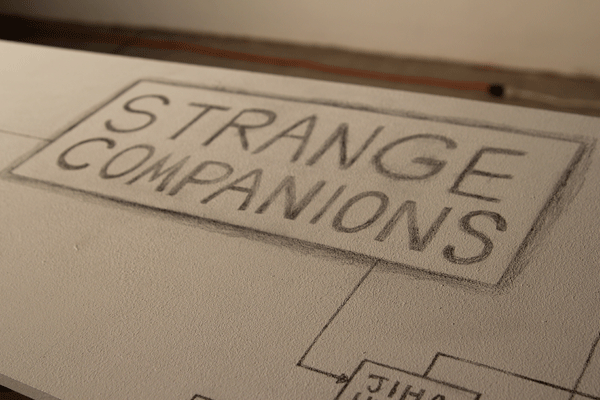Strange Companions asks us to experience a new type of robotic companion with unexpected and idiosyncratic behaviors. Through a series of visual studies the audience can imagine how such creatures might behave in their living spaces.
It generates unexpected behaviors that can alter people's perception of common human companions by moving away from general behaviors that many domestic dogs and cats already have. What makes unexpected behavior so important in our lives? We tend to find human qualities in many unexpected behaviors of our pets so we feel more connected and attached to them. Living with another life form can be a challenge to many of us especially in these unexpected situations, however through many obstacles, our intimate relationship builds up.
In Strange Companions I use diagrammatic behavior systems to tell interesting stories of these companions. The diagram starts from the input (interaction between owner and creature) system to the output (creature's unexpected behavior) system. Having an ability to learn through their own experiences, they make their own decisions a long the way. The photography of blurred and undefined subject within actual environment setting shows a little glimpse of what the actual creature may feel like with a sense of mystery. The audiences can also experience more specific situations through reading several interesting and provocative stories about these creature in details.
I strongly believe "inside" is more important than "outside"; the interesting behavior system is the core of my creation rather than its outer design. I don't want my idea to be judged as just another product; it should be more than that. Not showing the shape of these creatures provides a space for the audiences to imagine. Life is full of unexpectedness and we often discover strange behaviors in human as well as in animals, thus it makes our lives a whole lot more interesting.

It generates unexpected behaviors that can alter people's perception of common human companions by moving away from general behaviors that many domestic dogs and cats already have. What makes unexpected behavior so important in our lives? We tend to find human qualities in many unexpected behaviors of our pets so we feel more connected and attached to them. Living with another life form can be a challenge to many of us especially in these unexpected situations, however through many obstacles, our intimate relationship builds up.
In Strange Companions I use diagrammatic behavior systems to tell interesting stories of these companions. The diagram starts from the input (interaction between owner and creature) system to the output (creature's unexpected behavior) system. Having an ability to learn through their own experiences, they make their own decisions a long the way. The photography of blurred and undefined subject within actual environment setting shows a little glimpse of what the actual creature may feel like with a sense of mystery. The audiences can also experience more specific situations through reading several interesting and provocative stories about these creature in details.
I strongly believe "inside" is more important than "outside"; the interesting behavior system is the core of my creation rather than its outer design. I don't want my idea to be judged as just another product; it should be more than that. Not showing the shape of these creatures provides a space for the audiences to imagine. Life is full of unexpectedness and we often discover strange behaviors in human as well as in animals, thus it makes our lives a whole lot more interesting.

